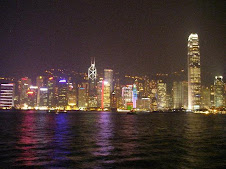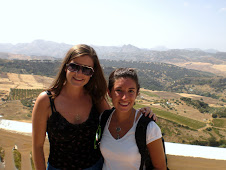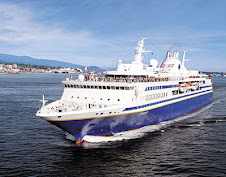Hello from the Indian Ocean!
It’s my first time over here in the Indian Ocean. So far so good—as we were rounding the cape of South Africa and entering the Indian Ocean from the Atlantic, I was on the back deck watching the sunset when I saw “the green flash” for the first time. (Just in case you don’t know, the green flash refers to the ray of green light that can be seen by ocean-goers for a half a second as the sun falls completely below the horizon.) If that wasn’t exciting enough, just minutes afterwards I saw a pod of eight to ten humpback whales cruising alongside our ship. It was a very cool welcome to the Indian Ocean. Since then though, the Indian Ocean hasn’t felt much different the Atlantic or the Pacific. Still, the places we’re going to visit in this ocean are going to be nothing like what I’m used to when I’m nested safely between the Atlantic and Pacific back in the US. The next few countries we’re hitting are Mauritius, India, and then over to Vietnam—it should be epic. I’ve been busy with school work for the first time thus far on the voyage (midterms…), but we’re just a day and a half away from the spring break-style vacation island nation of Mauritius now so I thought it was time to share my reflections on the AMAZING country of South Africa.
As much as great of a time as I had in Canada, Spain, Morocco, and Ghana none of them were quite as phenomenal as South Africa. I can’t put my finger on exactly why I loved South Africa so much, but I think it definitely had to do something with the fact that there is a very distinct culture, history, and geography of South Africa, yet it isn’t too unfamiliar. I found myself continually comparing Cape Town to Los Angeles. The sun, the winds, the temperature, the development extending from the coastline all the way up to the bases of the picturesque mountains that surround the city, the ritzy hotels, amazing restaurants, and swanky shops all made Cape Town feel very comfortable and familiar to me. It was this comfort in combination with the crazy safari animals, the Afrikaans speaking people, the bunny-chow dinners (no, they’re not made with rabbit), and probably most of all the friendly and amusing local people that made my South African experience so amazing. I’ll tell you about my favorite South Africans, or SAffers as they call themselves, later.
The first thing we saw when arriving in Cape Town was the stunning Table Mountain that is the backdrop of the city. I wish that I could post pictures because Table Mountain is something that you cannot really be described in words, but unfortunately here on the boat our communication with the outside world is limited to text. [Note from Mom/Martha: I posted a web photo of Table Mountain since Sarah was not able to send one.] When possible I will definitely add images to this blog so you can not only hear about, but also see bits of my adventures.
After a day of discovering Cape Town I flew to Port Elizabeth, in the Eastern Cape, with a group of SAS students looking to find some of Africa’s largest and most impressive wild animals. I went on safari at Kariega Game Reserve which is a large private reserve that is home to all of the “Big Five” (elephants, rhinos, buffalo, leopard, and lions) as well as many other cool safari animals. Although the animals are confined by the electric fences that surround the large reserve, they are all wild animals and are treated as such—the lions are left to kill whatever prey they can take down.
Each day, oftentimes in the early morning and late evening when the animals are most active, my group of eight went out with our ranger, Terry, in our roofless off-roading jeep to search for the many types of animals. Many of the animals were surprisingly difficult to find. I guess it was hard because the reserve was so big, but we didn’t even find elephants (seemingly the easiest animals to find because of their size) until the second day on safari. After three days though we did see everything—from ostriches, to giraffes, to hippos, lions, wildebeest, monkeys, elephants, zebras, rhinos, buffalo, tortoises, many different types of antelope and bird species—everything except for leopards. Leopards are quite hard to find because they live by themselves, hide in trees and tall grasses, and are most active during night. Terry told us leopards are seen by a ranger only once every three weeks or so in Kariega.
There were three other groups of Semester at Sea students at Kariega; each group searched around for animals independently in our separate jeeps. Every night when we all met up for our amazing exotic dinners of kudu, ostrich, and other game there was a sort of competition between the vehicles as to who had seen the best animals, or seen the animals doing the coolest things. For example, seeing two male lions roaring gained your jeep a lot of brownie points.
On the last evening as we were heading in after dark my jeep decided we were going to ‘see a leopard.’ Everyone got super into the idea so we discussed the details of how we saw it: “when we were driving back from seeing the hippos it was walking across the path, it saw us, and then jetted for the bushes. It was hard to see, but it was quite a bit smaller than the lions.” We didn’t even know what a leopard really looked like so we had to get the details from Ranger Terry. He also got really into the idea of a leopard sighting. Terry said asked us, “are you guys really going to do this? Because if you stick with it, I’ll call it in on the radio. But if I do then it really happened, because I could get in a lot of trouble for falsely reporting a sighting.” So my group decided we’d stick with the lie. At dinner we told everyone our elaborate story and, needless to say, they were all very jealous. Terry got a lot of props from the other rangers, too, but they seemed to quiz us about the leopard, almost as if they didn’t believe Terry. It wasn’t until we were back on the ship where Terry couldn’t get into any trouble that we finally broke and admitted to the other groups it was a big fabrication. We had a number of good laughs about it.
The most interesting piece of knowledge that I learned on safari—knowledge that I feel I should spread to you all—was that of the correct terminology for groups of different species. I’ll tell you some of the best: “raft” of hippos, “troop” of monkeys, “pride” of lions, “crèche” of rhinos, “dazzle” of zebras, “journey” of giraffes, and my favorite: “implausibility” of wildebeest. I also had “peck” of hyenas on my list until Terry saw what I was writing and corrected me saying that the collective term for hyenas was very easy—they’re simply in a “pack.”
This was not the only time I had trouble comprehending the South African vernacular. When hanging out with my favorite two locals, Dean and Dan, I was always very focused when they were speaking, attempting to figure out which words were slang and which words I knew very well but I just thought were slang because of the way SAffers pronounced them. At one point there was an entire sentence I didn’t understand. I let it go as I sometimes did when I thought the statement didn’t require a response from me. Still, later I admitted there was a moment “when it sounded like [they] were speaking a foreign language.” Dan and Dean laughed and admitted that I wasn’t crazy. They were actually speaking a different language—they were speaking Afrikaans (the other main language of South Africa). As you can tell, despite the fact that South Africans speak English, communication was not always fluid. Still, I really think this added to the fun and excitement.
One of the many, many reasons I loved South Africa was, once again, because of the lasting influence of the British Empire. It is so nice being in countries where the main language of the people is English. It’s not even the convenience of being able to find my way around or knowing exactly what I’m eating for dinner, it’s the experience of meeting the locals. Talking with and hanging out with the SAffers may have been the best part of my entire stay in South Africa. Just comparing things that we have versus what they have or what we say versus what they say is so much fun. They had a ton of slang words, most of which were completely foreign to me because they were Afrikaans words, but I picked up a few that I like. My favorite is more of a SAffer phrase than a SAffer word; instead of saying “that sucks,” SAffers say “that’s not ideal.” They’re classy like that. They also thought speaking with us was really fun/funny; at one point Dean said to me, “I feel like I’m in the movies when I talk with you.” There was a genuine interest in the lifestyle of the other party that made the conversations between the South Africans and us Americans last for hours. I spent the entirety of my last day in South Africa just hanging out by the spectacular Kalk Bay with a Semester at Sea friend and our new SAffer friends just watching the seals, drinking beer, eating fish and chips, and chatting. I wish so much that I could just do that for weeks.
I loved South Africa so much I’ve spent the last few days ignoring my Global Studies midterm and scheming as to how I can get an internship in Cape Town or go to the 2010 World Cup to get back there. If anyone has any ideas, let me know!
There is so much more I could tell you all about South Africa because it really was that amazing. Unfortunately, I need to be off to get on that studying because my midterm is in eight hours. When I’m home though, just ask, and I’ll go on for hours with many more stories.
Go Phils! Beat LA!
Wednesday, October 14, 2009
Subscribe to:
Post Comments (Atom)













No comments:
Post a Comment